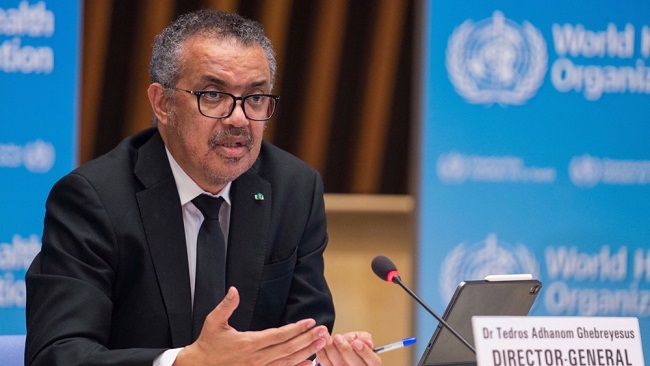WHO says all hypotheses still open on coronavirus origins
The World Health Organization (WHO) says all hypotheses are still open in its search for the origins of the new coronavirus, although a team of its investigators quashed allegations that the virus escaped from a lab in China.
A WHO-led team that spent four weeks in China concluded its investigative mission in Wuhan this week, saying that the “laboratory incident hypothesis is extremely unlikely.”
It “is not in the hypotheses that we will suggest for future studies,” said Peter Ben Embarek, who heads the team.
WHO Director-General Tedros Adhanom Ghebreyesus, however, said on Friday, “I wish to confirm that all hypotheses remain open and require further analysis and studies.”
He said the team had conducted a “very important scientific exercise in very difficult circumstances.”
“We have always said that this mission would not find all the answers, but it has added important information that takes us closer to understanding the origins of the virus,” Tedros said.
“Some of that work may lie outside the remit and scope of this mission,” he added.
The team said that its main hypotheses are that the virus originated in a bat, although there are several possible scenarios for how it passed to humans.
The new coronavirus was first reported in Wuhan in December 2019 and quickly emerged in different parts of the world.
The administration of former US President Donald Trump alleged that the virus was originated in a lab in Wuhan.
China, which denied the allegations, said that the virus could have emerged in multiple regions outside China.
Ben Embarek also said, “Usually laboratory researchers who work and discover new viruses would immediately publish their findings.”
“That’s a common practice around the world, particularly with new, interesting viruses,” he added.
The WHO technical lead on COVID-19, Maria Van Kerkhove, said previously that the origins of the virus may remain a mystery forever.
Although the US had officially confirmed the first case of COVID-19 on January 19 — a man who had returned from China — a report said later that the coronavirus infected people in the country weeks before it was officially identified in China.
The US Centers for Disease Control and Prevention (CDC) found that the virus was present in the US about a month earlier than public health authorities found the first case of COVID-19.
Ever since, the US has had reported 27,490,037 cases of COVID-19 and 480,767 related deaths, according to Johns Hopkins University (JHU) data.
China has managed to effectively control the spread of the deadly disease, with a total number of 100,559 cases of the infection and 4,828 coronavirus related deaths across the mainland.
After the end of the WHO investigation in China, Beijing called on Washington to invite the team to investigate origins of the viral outbreak in the US.
“We wish that the US side can, like China, uphold an open and transparent attitude, and be able to invite WHO experts to the US to conduct origin tracing research and inspection,” Chinese foreign ministry spokesman Wang Wenbin said on Wednesday.
The administration of President Joe Biden, instead, said it had not been involved in the “planning and implementation” of the WHO probe and that it wants to scrutinize the WHO findings and underlying data.
Editor-in-chief of Chinese newspaper Global Times reacted to the remarks, saying that Washington is “independently examining the WHO’s data? It’s the WHO who should examine the US data.”
“Did we all mishear, or is this spokesperson really so shameless?” he asked.
He said that the WHO-led team “completely refutes the conspiracy theory raised by some anti-China hawks, like former US secretary of state Mike Pompeo.”
Pompeo had said there was “a significant amount of evidence” that the new coronavirus emerged from a Chinese laboratory, without providing any evidence.
The coronavirus pandemic has infected more than 108,186,991 people across the globe and claimed the lives of 2,382,880 others, according to JHU data.
Source: Presstv





